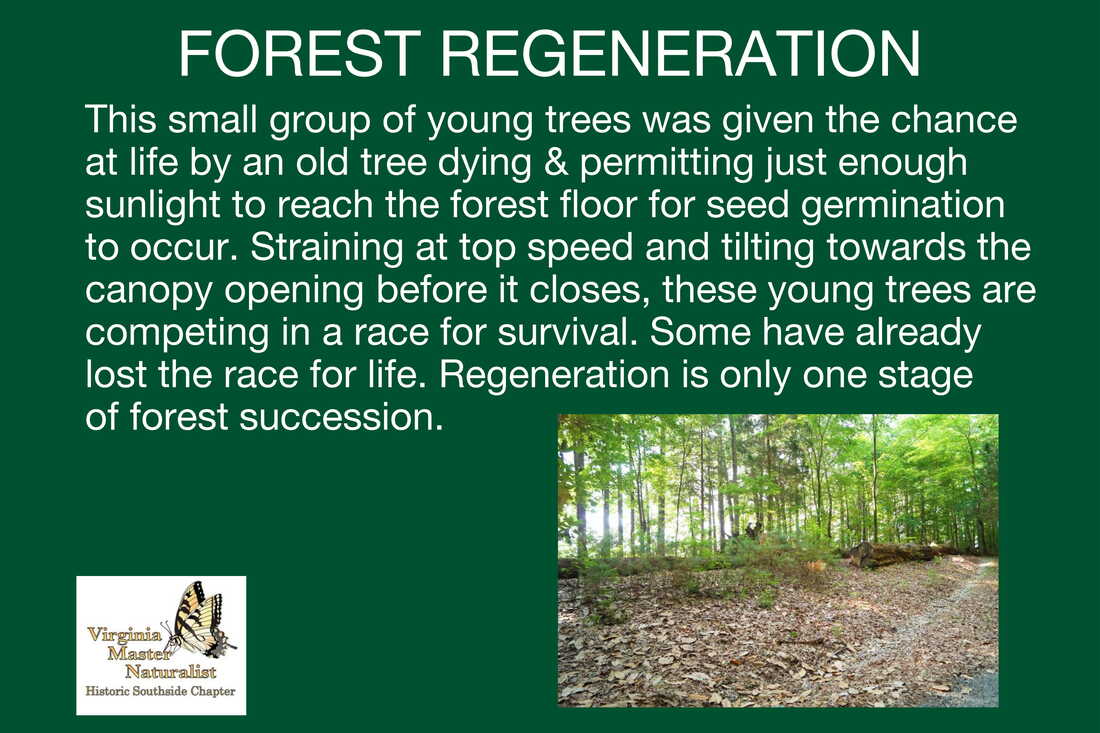Introduction
This small group of young trees struggling for life is part of a community sequence occurring in nature called “succession”. Succession is the never-ending cycle of the forest evolving thru a succession of plant types. Trees are a type of woody plant. In our region, land that is barren may go through the following stages of succession over time if not disturbed: annual plants > perennial and grasses > shrubs > pine forest > mature hardwood forest. This final community is called the climax stage of natural forest succession.
Some facts to consider
This small group of young trees struggling for life is part of a community sequence occurring in nature called “succession”. Succession is the never-ending cycle of the forest evolving thru a succession of plant types. Trees are a type of woody plant. In our region, land that is barren may go through the following stages of succession over time if not disturbed: annual plants > perennial and grasses > shrubs > pine forest > mature hardwood forest. This final community is called the climax stage of natural forest succession.
Some facts to consider
- There are many species of hardwood trees throughout Virginia. Individual species and groups of species are specifically associated with each region of the State and site. Hardwood forests are very diverse and harbor many benefits including those associated with timber production, game and non-game wildlife, aesthetics and landscape, recreation, quality water production, and soil protection. Biological diversity of flora and fauna is great in the hardwood forest ecosystem.
- Forest regeneration, or regrowth, requires sufficient numbers of desirable tree seedlings to replace today's forest following a harvest. Under many circumstances, regeneration is not easy. Competing plants, deer, and insufficient light on the forest floor can interfere with regeneration and, in the long run, may threaten forest sustainability.
- Forests are a precious natural resource. We depend on forests for the quality of life we enjoy. We use them to sustain life as we know it. Wisdom tells us that future generations, your children and theirs, will also use forests for these same benefits. The science of forestry was developed to sustain our forests.








